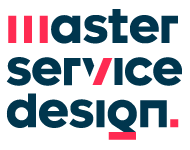Service design, I learned in the second week is all about people and requires getting to the heart of understanding what people want. This necessitates research methods of the qualitative variety to test assumptions and draw insight. In theory, this is straight-forward but having worked in research, I’m all too aware of the realities; people don’t always know what they want, and what they think they want (more often than not) isn’t the same as what they do want in an actual scenario. The trouble is that until we are confronted by the reality of a situation we can’t know how we will feel. Between our imagined best scenario (fantasy) and reality lies a vast unknown. This has been a cause of reflection for me this week in class and in my personal experience.
After two weeks flat-hunting in Milan, I discovered many possible scenarios that challenged my initial understanding of what I thought I needed. Optimal wasn’t necessarily best because until I stood in that tiny flat, I remained distant from the emotion of living there. Until then it was impossible to anticipate the emotional impact, let alone factor it in. In this I realised that as emotional beings, very few of us opt for the logical choice, unless faced with necessity, and even then we tend to opt for something most meaningful to us.
David McWilliams, one of my favourite modern-day Irish personalities, is an economist who argues that economics is based upon the assumption that human beings are logical and consequently will make rational decisions. But according to McWilliams, human beings are no such thing, instead even when someone is faced with a crucial decision, their choice can be more telling of the days’ mood or last night’s dinner. I agree entirely and despite an inherited inclination towards practicality and resourcefulness, I struggle to overrule the emotional aspect. The point McWilliams illuminates, and which I feel is key to service design, is that emotions (feelings, reactions, memories, personal associations and impact) rather than logic is often the greatest culprit in swaying our decisions. Which can only be revealed in the act of doing.
In the final hours of the lecture this week, I discovered that bridging the gap between the imagined (unknown) and reality depends upon the strength of the prototype (limited itself because of the contrived setting in which the prototyping takes place). This is where service designers can create impact by moving beyond initial assumptions and impressions to reveal real insights, inevitably hidden at first glance.

